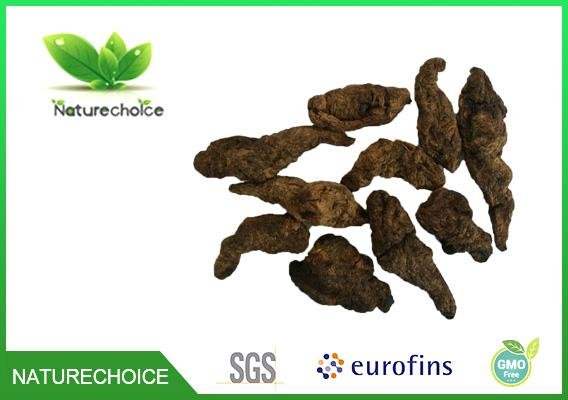| Model: | - |
|---|---|
| Brand: | - |
| Origin: | Made In China |
| Category: | Agriculture & Foods / Agricultural Products & Resources / Plant Extract |
| Label: | Rehmanniae Radix , Steamed Rehmaniae , Chinese Foxglove |
| Price: |
US $2.5
/ kg
|
| Min. Order: | 200 kg |
Product Description
Steamed Chinese Foxglove /Rehmanniae Radix Teabag Cut
English Name: Steamed Chinese Foxglove
Latin Name: :Rehmanniae glutinosa Libosch
Chinese Name: Shudihuang
Original place: Wen County,China
Specification : 0.3-0.8cm
Moisture:<15%
Impurity:<1%
Ash:<5%
Package:20kg/Carton,Size: 27*32*48cm ,Inner side: 10kg/bag Size: 48cm*60cm
Quantity: 1000kg
Destination: Taiwan
Shipping date: May 30th
Original place
Rehmannia root is widely distributed throughout China. Nowadays, it is mainly cultivated in Henan and Shanxi provinces.The production of Henan is regarded as the genuine one. Rehmannia root is cold in nature, sweet and bitter in flavor, and mainly manifests its therapeutic actions in the heart, liver and kidney meridians.
Identified Active Components/ Major Chemical Constituents
Rehmannia root contains sterol, glycosides and polysaccharides, its active components are mainly iridoid glycosides, such as catalpol, rehmanniosides A-D, leonuride, aucubin, melittoside, jioglutoside A-B, 6-O-E-feruloyl ajugol, rehmaglutins A-D, glutinoside, purpureaside C, echinacoside, jionosides A1 & B1, cistanosides A & F, and acteoside. Its polysaccharides include stachyose, raffinose, glucose, sucrose, fructose, manninotriose, galactose and rehmannia glutinosa polysaccharides (RPS-b). Rehmannia root also contains over 20 kinds of amino acids, as well as alkaloids, phosphoric acid, organic acids, adenosine, trace elements, lecithin and vitamin A. Because of the drying and baking processes, part of the polysaccharides were decomposed in the dried herb, and the levels of catalpol, leonuride and aucubin might only be remained about 66%, in comparing with the fresh herb.
In the Pharmacopoeia of People's Republic of China (2010 Edition) - Part I, the level of catalpol should not less than 0.20%, and the acteoside should not less than 0.020%, which are the standard qualities of rehmannia root
Drug actions in TCM
Rehmannia root clears heat, cools blood, nourishes yin and promotes body fluids production.
Traditional Use in TCM
Rehmannia root is often used in conditions like fever, fluid exhaustion, consumptive diseases, bleedings, anemia, dizziness, palpitations, and menstrual disorders.[2]' [4]' [5]
Rehmannia root is an important ingredient for clearing heat, cooling blood and stop bleeding.
According to TCM theory, infectious diseases are associated with external pathogens attacking the inner body (entering the nutrient and blood stages), individuals may have high fever, a red tongue, bleeding under the skin, or vomiting blood or nose bleeding. Rehmannia root can be used along with figwort root, peony root bark, red peony root and gardenia fruit in the remedies. An overheated digestive track may lead to pass bloody stool, which can be treated with rehmannia root along with golden thread rhizome, garden burnet root, and pagoda tree flower. Bloody urine may be due to damp-heat in the lower burner, which can be treated with rehmannia root combining with couch grass rhizome and field thistle herb. Uterine bleeding can also be a heat sign, in which rehmannia root can be used with baical skullcap root and cattail pollen. In addition, modern TCM often uses rehmannia root in the treatment of low blood platelet count.
Rehmannia root is an important ingredient for clearing heat, nourishing yin and promoting body fluid production.
After feverish conditions, some individuals may remain a persistent low fever that typically experienced in the evening, a disharmony named as yin deficiency in TCM. Physicians like to prescribe rehmannia root along with sweet wormwood herb, soft-shelled turtle carapace and anemarrhena rhizome for relief. When the individual has constipation or hard stools, then the herb can be used with dwarf lily-turf tuber and figwort root to smooth and lubricate the bowel movements; when there are poor appetite and mouth dryness, the herb can be used with coastal glehnia root, fragrant Solomonseal rhizome and germinated barley to promote the digestive secretions and functions.
Rehmannia root is a common ingredient for chronic and consumptive diseases
Yin deficiency is a common presentation in immune disorders, such as SLE, Sjogren’s syndrome, rheumatoid arthritis, rheumatic fever, erythema nodosum, myocarditis, anaphylactod purpura, IgA nephropathy, urticarial, allergic dermatitis, psoriasis and eczema, which are categorized as consumptive conditions. Other chronic diseases such as hypertension, diabetes, diabetes insipidus, nephritis, hepatitis and asthma are also put in this category. Since individuals usually develop a depleted state, rehmannia root is often prescribed with cornus fruit, Chinese yam, poria, peony root bark, oriental water-plantain rhizome, snakegourd root, Chinese wolfberry, and astragalus root to supplement the body, relieve symptoms, enhance overall functioning and assist the routine treatments.
Fresh rehmannia root is colder in nature that has similar actions as the dried rehmannia root, its yin nourishing actions are weaker, but it has stronger abilities in clearing heat, cooling blood, stop bleeding and promoting body fluid production..
Member Information
| Xi'an Nature Choice.,Ltd | |
|---|---|
| Country/Region: | Shaan Xi - China |
| Business Nature: | Trading Company |
| Phone: | 17782575986 |
| Contact: | Kevinlin (Sales Manager) |
| Last Online: | 02 Jul, 2019 |
Related Products of this Company
-
Rhodiola Rosea Root slice and TBC
US $17
-
Astragalus root Cut
US $5
-
Organic Astragalus powder
US $5.5
-
Astragalus root slice
US $11









